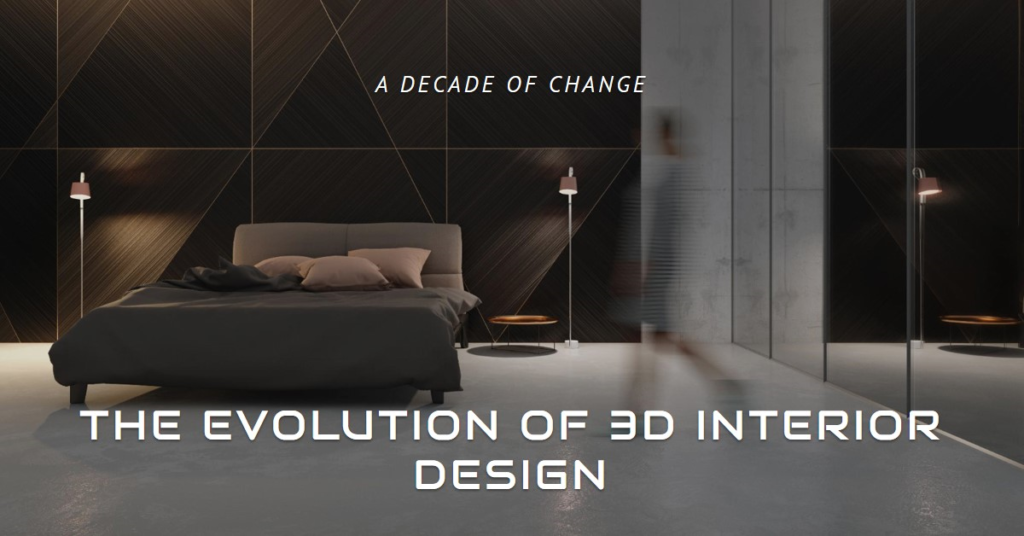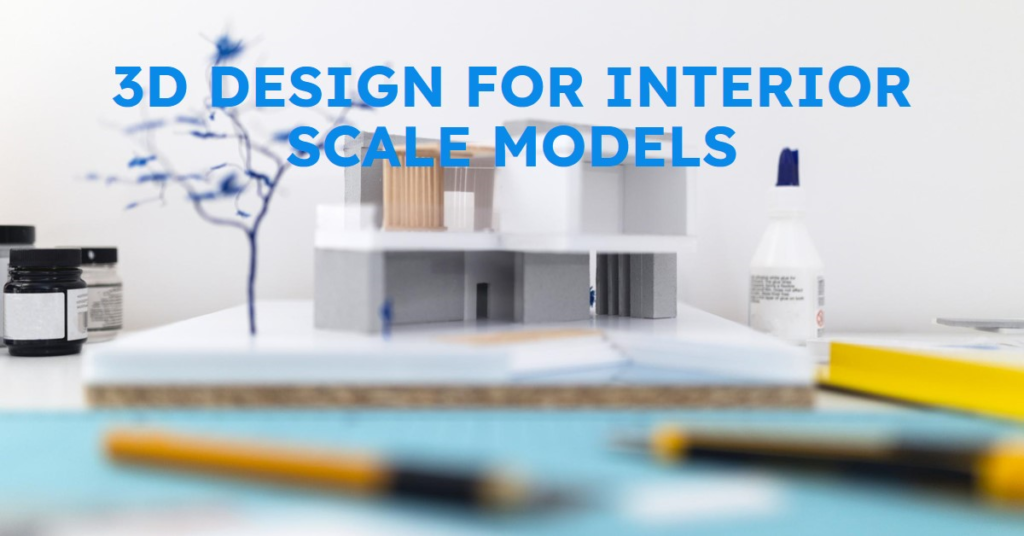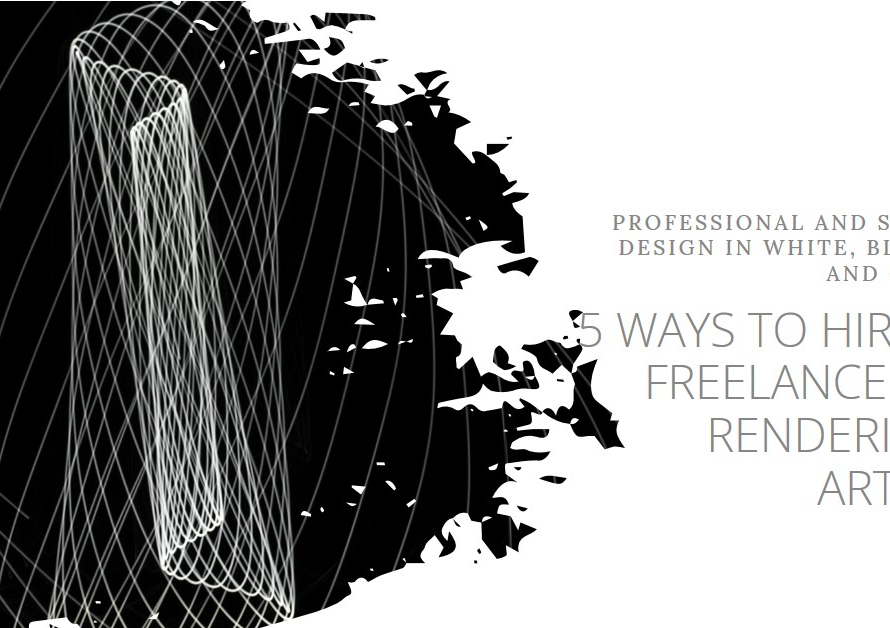
Table of Contents
1. Introduction: A Decade of Innovation
Over the past decade, the field of 3D interior design has undergone significant transformations, driven by advances in technology, changing industry trends, and evolving client expectations. From the emergence of new software tools to the adoption of innovative design techniques, the landscape of 3D interior design has evolved rapidly, shaping the way designers conceptualize, visualize, and execute interior spaces. In this retrospective analysis, we’ll explore the key developments and trends that have shaped 3D interior design from 2010 to 2019, tracing the evolution of the industry and its impact on the design process.
2. Rise of Real-Time Rendering: The Era of Instant Visualization
One of the most significant developments in 3D interior design during the 2010s was the rise of real-time rendering technology. Traditionally, rendering a high-quality image of an interior space could take hours or even days to complete. However, advancements in rendering engines such as Unreal Engine and Unity enabled designers to achieve photorealistic results in real-time, allowing for instant visualization of design concepts. This shift towards real-time rendering revolutionized the design process, empowering designers to iterate on their ideas more quickly, communicate more effectively with clients, and make informed design decisions in a fraction of the time.
3. Adoption of Virtual Reality: Immersive Design Experiences
Another notable trend in 3D interior design during the 2010s was the widespread adoption of virtual reality (VR) technology. VR headsets such as the Oculus Rift and HTC Vive became increasingly accessible and affordable, allowing designers to create immersive, interactive experiences for clients. By leveraging VR technology, designers could transport clients into virtual versions of their proposed interior spaces, allowing them to explore and interact with the design in a highly realistic and immersive manner. This immersive design experience not only enhanced client engagement and satisfaction but also provided designers with valuable feedback and insights into the spatial layout, flow, and functionality of the design.
4. Integration of Augmented Reality: Designing in the Real World
In addition to virtual reality, augmented reality (AR) emerged as a powerful tool for 3D interior design during the 2010s. AR technology, which overlays digital content onto the real-world environment, allowed designers to superimpose virtual furniture, fixtures, and finishes onto physical spaces in real-time. This enabled clients to visualize how different design elements would look and feel in their actual homes or offices, facilitating more informed design decisions and reducing the risk of dissatisfaction or miscommunication. By integrating AR into their design process, designers could bridge the gap between the digital and physical worlds, creating seamless and immersive design experiences for clients.
5. Accessibility of Design Software: Empowering Designers
The past decade also witnessed a significant increase in the accessibility and affordability of 3D design software, democratizing the design process and empowering designers of all skill levels. Software platforms such as SketchUp, Blender, and Autodesk Fusion 360 offered powerful tools and features for creating 3D models, rendering images, and presenting design concepts, making it easier than ever for designers to bring their ideas to life. This increased accessibility of design software enabled designers to experiment with new techniques, explore creative ideas, and collaborate more effectively with clients and colleagues, driving innovation and advancement in the field of 3D interior design.
6. Customization and Personalization: Tailoring Designs to Client Needs
As consumer preferences and lifestyles became increasingly diverse and dynamic, the demand for customized and personalized interior designs grew significantly during the 2010s. Designers responded to this trend by leveraging 3D design software to create bespoke interiors that reflected the unique tastes, preferences, and lifestyles of their clients. Whether designing a residential home, commercial space, or hospitality venue, designers used 3D modeling, texturing, and rendering tools to tailor every aspect of the design to the client’s specifications, creating spaces that felt truly personalized and one-of-a-kind. This emphasis on customization and personalization not only enhanced client satisfaction but also fueled creativity and innovation in the field of 3D interior design.
7. Sustainability and Green Design: Designing for a Better Future
Throughout the 2010s, there was a growing awareness and concern about the environmental impact of interior design and construction practices. In response, designers began incorporating principles of sustainability and green design into their projects, using 3D design software to explore eco-friendly materials, energy-efficient technologies, and sustainable building practices. By simulating the environmental performance of their designs and analyzing factors such as daylighting, thermal comfort, and energy consumption, designers could create interiors that minimized their ecological footprint and promoted a healthier, more sustainable built environment. This shift towards sustainable design not only aligned with client values and regulatory requirements but also contributed to the long-term viability and resilience of the design industry.
8. Collaboration and Communication: Breaking Down Silos
Collaboration and communication were key themes in 3D interior design throughout the 2010s, as designers sought to break down silos and foster greater synergy between different disciplines and stakeholders. Designers embraced collaborative design platforms such as BIM (Building Information Modeling), which enabled multidisciplinary teams to work together on a single, shared model of the project. By facilitating real-time collaboration and communication, BIM software enhanced coordination, reduced errors, and improved decision-making throughout the design and construction process. This collaborative approach not only improved project outcomes but also strengthened relationships between designers, clients, contractors, and other project stakeholders, paving the way for more integrated and holistic design solutions.
9. Hyperrealism and Artistic Expression: Pushing the Boundaries of Visualization
In the quest for ever more immersive and engaging design experiences, designers began pushing the boundaries of visualization during the 2010s, exploring hyperrealistic rendering techniques and artistic expression in their work. Through the use of advanced rendering engines, sophisticated lighting setups, and intricate detailing, designers created renders that were indistinguishable from reality, blurring the line between the virtual and physical worlds. This hyperrealism not only enhanced the visual impact of the design but also evoked emotional responses and fostered deeper connections with viewers. In addition to hyperrealism, designers also embraced artistic expression in their renders, experimenting with different styles, aesthetics, and visual motifs to create truly unique and memorable design experiences.
10. Conclusion: The Future of 3D Interior Design


As we look ahead to the future of 3D interior design, it’s clear that the possibilities are endless. With ongoing advancements in technology, shifting industry trends, and evolving client expectations, the field of 3D interior design will continue to evolve and innovate in the years to come. From real-time rendering and virtual reality to sustainability and artistic expression, designers will have access to a wide range of tools and techniques for creating immersive, personalized, and sustainable interior spaces. By embracing these opportunities and challenges, designers can harness the power of 3D design to shape a more beautiful, functional, and sustainable built environment for generations to come.


